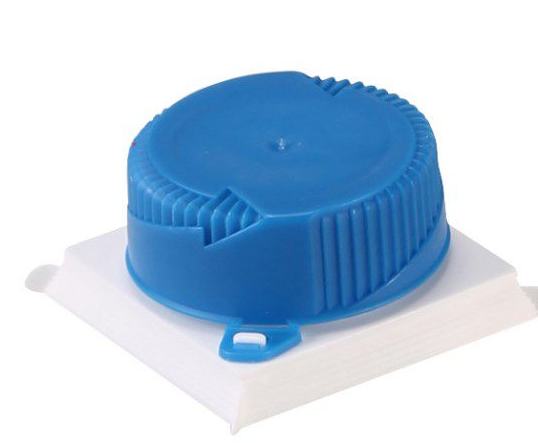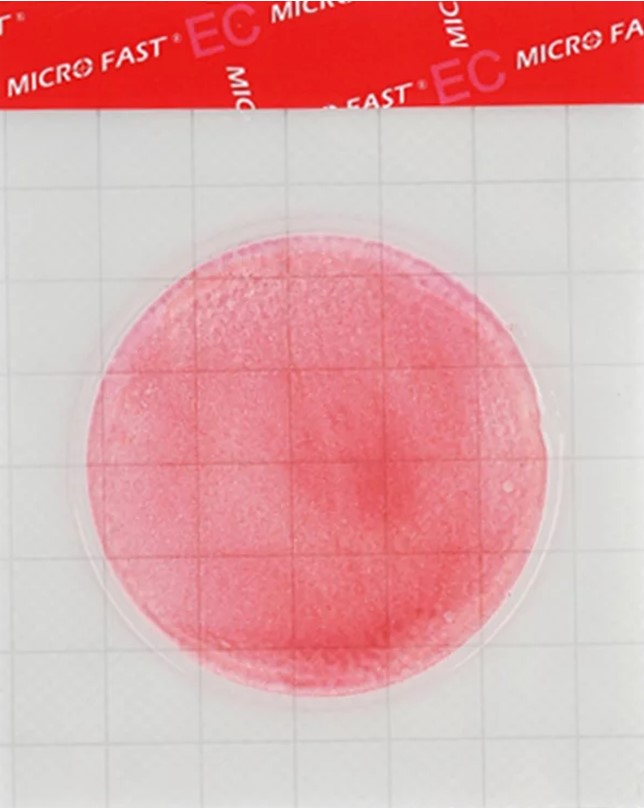Vitamins and minerals for sheep

Aspects of mineral and vitamin supplementation for sheep were explained by Dr. David G. Pugh of Auburn University, Alabama, in his Veterinary Manual article: trace elements, including cobalt, copper, iodine, iron, manganese, molybdenum, zinc and selenium.
Micromineralized SALT provides an economical way to prevent sodium, chloride, iodine, manganese, cobalt, copper, iron and zinc deficiencies.
Selenium should be included in diets, mineral mixes, or other supplements in deficient areas.
The diet of sheep usually contains sufficient amounts of potassium, iron, magnesium, sulfur and manganese. Of the micronutrients, iodine, cobalt, and copper status in sheep is best assessed by liver biopsy tissue analysis. Zinc sufficiency can be assessed by careful collection of non-hemolyzed blood, selenium status is easily assessed by the collection of whole, preferably heparinized blood.
Except in pastures with highly alkaline soil, sheep should be supplied with salt (sodium chloride) of free choice. Adult sheep consume about 9 g of salt daily, and lambs - half that. In pastures, 225–350 g of salt per sheep per month is usually provided. Usually enough salt in the amount of 0.2-0.5% of the dry matter of the diet.
calcium and phosphorus
Plants tend to be relatively high in calcium and low in phosphorus in leaf parts, while the opposite is true in seeds. Legumes have a higher calcium content than grasses. As the herbs mature, phosphorus is transferred to the seeds (grains). In addition, the phosphorus content in the plant is significantly affected by the availability of phosphorus in the soil.
Thus, low-quality pastures devoid of leguminous grazing plants tend to have a naturally low phosphorus content, especially as seeds mature and fall. With such grazing, there is a risk of developing a phosphorus deficiency in sheep. Therefore, sheep fed such feeds or receiving poor quality hay without grain should be given a phosphorus supplement (eg, defluorinated rock phosphate) added to a mixture of salts and micronutrients.
Because most feeds are relatively high in calcium, especially in legume mixtures, diets generally meet calcium maintenance needs. However, when fed exclusively with corn silage or other cereal grain feeds, ground limestone should be fed daily in the amount of 9–14 g.
Sheep seem to be able to tolerate a wide ratio of calcium to phosphorus if their diet contains more calcium than phosphorus. However, an excess of phosphorus can contribute to the development of urinary calculi (stones) or osteodystrophy. The ratio of calcium and phosphorus 1.5:1 is suitable for fattening lambs. For pregnant sheep, the diet should contain ≥0.18%, and for lactating sheep - ≥0.27%. The calcium content in the range of 0.2-0.4% is considered sufficient if the ratio is maintained in the range from 1:1 to 2:1.
Iodine
Sometimes the iodine requirements of sheep are not met in the natural diet, and therefore iodine supplements must be given. Goitrogenic substances are found in many plant species (eg Brassica spp.) and interfere with the use of iodine by the thyroid gland.
Iodine deficiency (manifested by goiter in adults and lack of wool and/or goiter in lambs) can be prevented by feeding stabilized iodized salt to pregnant ewes to prevent abortions or lambs being born with goiters. A diet containing 0.2–0.8% iodine is usually sufficient, depending on the level of performance of the animals (development maintenance, growth, lactation, etc.).
Cobalt
Sheep require ~0.1 ppm cobalt in their diet. Cobalt content is higher in legumes than grasses, but since cobalt levels in feed are rarely known, it is good practice to feed micromineralized salt containing cobalt.
Copper
Pregnant sheep require about 5 mg of copper (Cu) per day, which is the same amount provided when fed ≥5 ppm. However, the amount of copper in the diet needed to prevent copper deficiency depends on the intake of other dietary components, especially molybdenum (Mo), inorganic sulfate, and iron.
A high molybdenum intake in the presence of sufficient sulfate increases the demand for copper. Since sheep are more susceptible to copper poisoning than cattle , excessive consumption of copper must be avoided.
Toxicity can occur especially in lambs fed a diet of 10-20 ppm copper, especially if the Cu:Mo ratio is > 10:1. The Cu:Mo ratio must be maintained between 5:1 and 10:1.
Selenium
Selenium is effective for at least partial control of nutritional muscular dystrophy. The dietary requirement is ~0.3 ppm. Providing a selenium-containing mineral mixture can prevent selenium deficiency if animals have free access. Levels of 7–10 ppm or higher can be toxic.
Zinc
Growing lambs require ~30 ppm dietary zinc on a dry matter basis. Classical zinc deficiency (parakeratosis) is more common in other small ruminants (goats), but occasionally in sheep, especially when diets are high in calcium (legumes).
Vitamins for sheep
The diet of sheep usually contains adequate amounts of vitamins A (provitamin A), D and E. However, supplements may be required under certain circumstances.
The B vitamins and vitamin K are synthesized by rumen microorganisms and in practice no supplements are needed. However, polioencephalomalacia can and does occur due to disturbances in thiamine metabolism in the rumen secondary to altered rumen pH and/or microflora content.
Vitamin C is synthesized in sheep tissues. On diets rich in carotene, such as high quality pasture or green hay, sheep can store large amounts of vitamin A in their livers, often enough to meet their needs for 6 months.
Animals obtain vitamin D 2 from sun-dried feed, and vitamin D 3 from exposure to ultraviolet light on the skin. When skin exposure to sunlight is reduced by prolonged overcast or restricted housing conditions, and when dietary vitamin D2 levels are low (vitamin D requirements increase when dietary calcium or phosphorus is low or when the ratio is high), then the correction should still be carried out with great care - vitamin D poisoning is a severe syndrome.
Fast-growing lambs kept in barns away from direct sunlight or fed green fodder (high in carotene) during the winter months (low exposure) may show impaired bone formation and other signs of vitamin D deficiency. Grazing sheep very rarely need supplementation vitamin D.
The main sources of vitamin E in the natural diet of sheep are green fodder and seed germ. Because vitamin E is not stored well in the body, daily intake is necessary. When sheep are fed low-quality hay or forage, vitamin E supplementation can lead to increased productivity, increased lamb weight at weaning, and improved colostrum quality. Vitamin E deficiency in young lambs can contribute to nutritional muscular dystrophy if selenium intake is also low.”
Read together with it:
- Низкое предложение и устойчивый спрос: в Аргентине растут цены на мясоЦены на говядину снова выросли, что отразилось на полках супермаркетов и в мясных магазинах. За последние две недели розничные цены выросли на 8–12%, а на некоторые популярные отрубы рост превысил 15% по сравнению с октябрем. Тем не менее, продажи остаются высокими: потребители продолжают покупать, принимая новые цены и закрепляя тенденцию, которая повторяется каждый год в конце года, когда спрос ...
- Колумбия: При экспорте скота сертификация и прослеживаемость больше не являются необязательнымиВысококачественное животноводство, особенно при экспорте, требует сертификации и прослеживаемости. Это необходимые условия для выхода и конкуренции на многих международных рынках, а также на некоторых всё более требовательных внутренних рынках. Колумбийское животноводство не является исключением из этих правил, и, хотя предстоит ещё многое сделать, всё большее число ферм и компаний внедряют эти ме...
- Россия увеличила экспорт живых животных в Узбекистан в 13 разДомашний крупный рогатый скот (КРС) — более 22 миллионов долларов Овцы — около 2 миллионов долларов Чистопородный племенной КРС — свыше 1 миллиона долларов Цыплята — примерно 1 миллион долларов Лошади — порядка 200 тысяч долларов Пчелы — около 50 тысяч долларов Для сравнения, самый высокий годовой экспорт живых животных из России в Узбекистан был зафиксирован в 2......
- RaboResearch: Мировой рынок говядины будет расти даже в условиях неопределенностиВ банке пояснили, что, несмотря на сохраняющуюся волатильность рынка, Бразилия и Китай укрепили свои позиции лидеров по экспорту и импорту говядины. В такой динамичной ситуации мировой сектор говядины в будущем столкнётся как с вызовами, так и с возможностями. За последние пять лет объемы мировой торговли говядиной увеличились: с 2......
- France has banned cattle exports and bullfighting due to the spread of the lumpy skin disease virus.The French Ministry of Agriculture announced on Friday that the measures will take effect on October 18 and remain in effect until November 4, with the possibility of rescinding them if the situation improves. Lumpy skin disease, spread by insects, affects cattle and buffalo, causing painful blisters and reduced MILK production. Although the virus poses no threat to humans, it often leads to trade...
- Spain remains Europe's leading feed producerAccording to the European Feed Industry Federation, feed production in the EU as a whole fell by 0.4%. By animal species, pig feed production remains the most significant, accounting for 46.87% of the total volume. Cattle and poultry follow, accounting for 20.78% and 19.85%, respectively. Compared to 2......
- Buffalo Farming in Colombia: From Exotic Species to Golden OpportunityIn Colombia, the buffalo market has grown significantly in recent years, becoming an unrivaled alternative for cattle farmers. According to the ICA (National Institute of Agricultural Research), the buffalo population has increased by 60.1% over the past six years, from 336,417 HEAD in 2018 to more than 617,......
- Supply shortages and tariffs are negatively affecting the global beef trade.Due to the reduction in livestock numbers, world prices for cattle are rising. "Northern Hemisphere countries continue to post record prices," said Angus Gidley-Baird, senior animal protein analyst at RaboResearch. "However, in recent weeks, prices in the US and CANADA have declined slightly, suggesting a slight slowdown in market growth. Meanwhile, prices in the Southern Hemisphere continue to ri...




























































